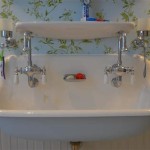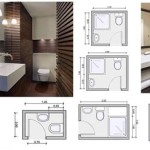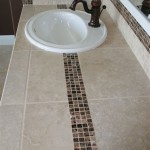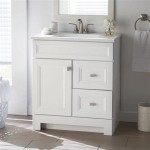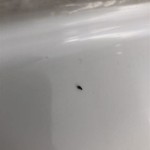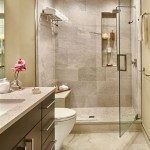How to Take Off a Bathroom Light Cover
Removing a bathroom light cover is a common task, often necessary for cleaning, replacing bulbs, or performing maintenance on the light fixture itself. While the specific mechanism for securing the cover varies depending on the design, the underlying principles for safe and effective removal remain consistent. This article provides a comprehensive guide to removing different types of bathroom light covers, emphasizing safety precautions and practical techniques.
Identifying the Light Cover Type
The first step in removing a bathroom light cover is to identify its type. This allows for the selection of the correct method and minimizes the risk of damage or injury. Common types include:。
* Twist-and-Lock Covers: These covers are typically round or dome-shaped and attach to the fixture using a twisting motion. They often have visible tabs or ridges that indicate the locking mechanism. * Snap-On Covers: These covers are held in place by pressure clips or spring-loaded mechanisms. They are often flat or slightly curved and may require a gentle pulling or prying action for removal. * Screw-On Covers: These covers are secured with screws, usually located around the perimeter of the cover. They can be made of glass, plastic, or metal. * Clip-On Covers: Similar to snap-on covers, these utilize metal clips that hold the cover in place. These can be more rigid and require a specific angle or direction to release. * Recessed Light Trims: These are often found in modern bathrooms and can have different removal mechanisms, including spring-loaded clips or torsion springs.Careful observation of the light cover’s design and how it is attached to the fixture is the key to choosing the appropriate removal technique.
Essential Safety Precautions
Before attempting to remove any light cover, safety should be the primary concern. Failure to take proper precautions can result in electric shock, injury from falling debris, or damage to the light fixture.
The most crucial safety step is to disconnect the power supply to the light fixture at the circuit breaker. Locate the breaker corresponding to the bathroom lights and switch it to the "off" position. This eliminates the risk of electric shock during the removal process. To confirm the power is off, test the light switch after flipping the breaker. If the light does not turn on, it is safe to proceed.
It is also advisable to wear safety glasses to protect the eyes from dust, debris, or fragments that may fall during removal. Depending on the height of the light fixture, use a stable ladder or step stool to reach the cover safely. Ensure the ladder is placed on a level surface and is securely positioned. It is best to have someone spot when working at heights in case of imbalance.
For light covers made of glass, wear gloves to provide a better grip and protect the hands from sharp edges. If the light bulb is still hot, allow it to cool down completely before attempting to remove the cover. Handling a hot bulb can cause burns. Prepare a soft surface, such as a towel or blanket, to place the light cover after removal. This prevents scratches or breakage.
Step-by-Step Removal Techniques
Once the light cover type has been identified and safety precautions have been taken, the actual removal process can begin. The following sections provide detailed instructions for removing different types of light covers.
Twist-and-Lock Covers:Grasp the light cover firmly with both hands. Locate the tabs or ridges that indicate the locking mechanism. Gently twist the cover counterclockwise until it is released from the fixture. The amount of twist required may vary depending on the design. Once the cover is unlocked, carefully lower it and place it on the prepared soft surface. If the cover is stuck, avoid excessive force, which could damage the fixture. Inspect the locking mechanism for any debris or obstruction that may be preventing the cover from turning. A small amount of lubricant can be applied to the tabs, but use sparingly.
Snap-On Covers:Snap-on covers are held in place by pressure clips, and can be tricky to remove. Locate the edges of the cover to find the insertion points. Using a flathead screwdriver, carefully insert the tip in the small space between the cover edge and the light fixture housing. Gently pry the cover away from the fixture. Be careful not to apply too much force, which could break the plastic. Repeat this process around the perimeter of the cover until all the clips are disengaged. Lower the cover carefully and place it on a soft surface. Some snap-on covers may require a slight pulling motion in addition to prying.
Screw-On Covers:Locate the screws that secure the cover to the fixture. Use a screwdriver that matches the screw head type (Phillips or flathead). Unscrew each screw, turning it counterclockwise. As the last screw is being removed, support the cover with the other hand to prevent it from falling. Once all the screws are removed, carefully lower the cover and place it on a soft surface. Store the screws in a safe place to avoid losing them. These screws can sometimes be specialized, so replacement with general screws can cause complications when re-attaching.
Clip-On Covers:Clip-on covers require identifying where the metal clips are located that hold the cover in place. They are usually visible on the edges. Sometimes, depressing the central part of the cover can slightly release the edges of the clips. Start by gently pushing the cover toward the ceiling and attempt to slide it to one side. This can disengage one set of clips. Then try the opposite direction, working the cover gently back and forth. Avoid excessive force. If no movement is noticed, inspect the clips closely to see if they can be manually released with a small tool or by hand. Protective gloves are recommended for this, as the clips can be sharp.
Recessed Light Trims:Recessed light trims often utilize spring-loaded clips or torsion springs. For trims with spring-loaded clips, locate the clips around the perimeter of the trim. Gently pull the trim down while simultaneously squeezing the clips to release them from the housing. The clips are designed to retract into the trim, allowing it to be lowered. For trims with torsion springs, the springs are typically visible inside the housing. Grasp the trim firmly and pull it straight down. The torsion springs will release from their slots, allowing the trim to be removed. Be prepared for the trim to come down suddenly once the springs are disengaged. This can be a two-person job depending on the set up.
Troubleshooting Common Issues
Sometimes, removing a light cover can present unexpected challenges. Here are some common issues and their potential solutions:
* Stuck Covers: If a cover is stuck, avoid using excessive force, which could damage the fixture or the cover itself. Inspect the locking mechanism or attachment points for any debris, corrosion, or paint buildup that may be preventing the cover from releasing. Apply a small amount of lubricant, such as WD-40, to the affected areas. Allow the lubricant to penetrate for a few minutes before attempting to remove the cover again. Gently tap the cover around the edges with a rubber mallet to loosen any binding. This is better than forceful prying which can cause cracks. * Broken Clips or Screws: If a clip or screw breaks during removal, it may be necessary to replace it. Take the broken clip or screw to a hardware store to find a suitable replacement. If a clip is embedded inside the fixture, attempt to extract it carefully using needle-nose pliers or a similar tool. If the damage is extensive, consider replacing the entire light fixture. * Difficulty Reaching the Cover: If the light fixture is located in a difficult-to-reach area, use a stable ladder or step stool. Ensure the ladder is placed on a level surface and is securely positioned. Have someone spot while climbing. Use tools with extended handles to reach the cover safely. Consider hiring a professional electrician if the task proves too difficult or dangerous. * Unidentified Cover Type: If the light cover type cannot be readily identified, consult the manufacturer's instructions or search online for similar light fixture models. Look for diagrams or videos that demonstrate the removal process. If still uncertain, contact a qualified electrician for assistance.By following these guidelines, removing a bathroom light cover can be a straightforward and safe process. Always prioritize safety and exercise caution to prevent damage to the fixture or injury. When in doubt, consult a professional electrician.

How To Remove The Light Cover In Room Frequently Asked Questions Leopalace21 Chintai Als Al Apartments And Monthly Mansion For Single Tenants

How Do I Replace The Bulb In This Enclosed Bathroom Ceiling Light Hometalk

How To Remove A Light Fixture With No Visible S

How Do I Replace The Bulb In This Enclosed Bathroom Ceiling Light Hometalk

How To Open Twist Off The Cover Of Some Really Stupid Awkward Flush Mounted Ceiling Light Dome Fittings Fixtures Replace Change Bulb My Technical Blog

How To Replace A Bathroom Light Fixture

How To Remove Ceiling Light Cover No S

Fix Loose Bathroom Vanity Light Fixture Homediygeek

How To Remove Ugly Bathroom Lighting Decor Adore

How To Replace Recessed Lighting W Cover In Bathroom
Related Posts
